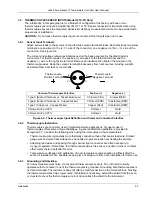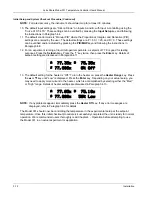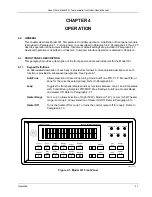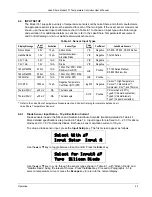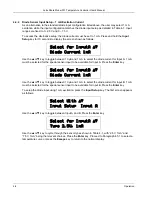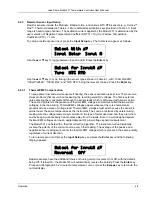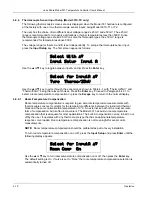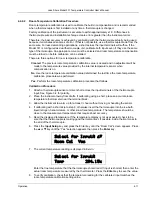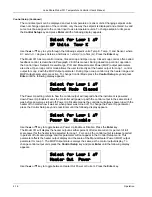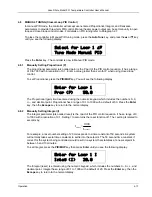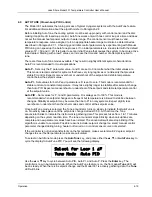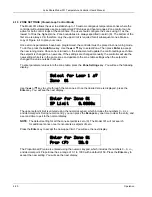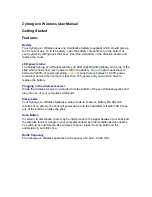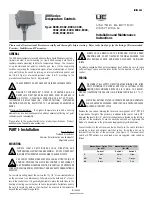
Lake Shore Model 331 Temperature Controller User’s Manual
4.4.3
Resistor Sensor Input Setup
Resistor sensors include the Platinum, Rhodium-Iron, and various NTC RTD sensors (e.g., Cernox™,
Rox™, Thermox) detailed in Table 4-1. More detailed specifications are provided in Table 1-3. Input
range is fixed to type of sensor. The excitation current applied by the Model 331 is determined by the
user selection of Negative Temperature Coefficient (NTC) = 10 µA or Positive Temperature
Coefficient (PTC) = 1 mA.
To setup a resistor sensor input, press the
Input Setup
key. The first screen appear as follows.
Select With °®
Input Setup Input A
Use the
s
or
t
key to toggle between Input A and B. Press the
Enter
key.
Select for InputA °®
Type NTC RTD
Use the
s
or
t
key to cycle through the sensor types shown in Table 4-1, with “100
Ω
Plat/250,”
“100
Ω
Plat/500,” “1000
Ω
Plat,” and “NTC RTD” being the relevant choices. Press the
Enter
key.
4.4.3.1
Thermal EMF Compensation
To keep power low and avoid sensor self heating, the sensor excitation is kept low. There are two
major problems that occur when measuring the resulting small DC voltages. The first is external
noise entering the measurement through the sensor leads which is discussed with sensor setup.
The second problem is the presence of thermal EMF voltages, sometimes called thermocouple
voltages, in the lead wiring. Thermal EMF voltages appear whenever there is a temperature
gradient across a piece of voltage lead. Thermal EMF voltages must exist because the sensor is
almost never the same temperature as the instrument. They can be minimized by careful wiring,
making sure the voltage leads are symmetrical in the type of metal used and how they are joined,
and by keeping unnecessary heat sources away from the leads. Even in a well designed system
thermal EMF voltages can be an appreciable part of a low voltage sensor measurement.
The Model 331 can help with a thermal correction algorithm. The instrument will automatically
reverse the polarity of the current source every other reading. The average of the positive and
negative sensor readings will cancel the thermal EMF voltage which is present in the same polarity,
regardless of current direction.
To turn reversal on or off press the
Input Setup
key and press the
Enter
key until the following
display appears.
Select for InputA °®
Reversal Off
Resistor sensors have the additional choice of turning current reversal On or Off, with the default
being Off. If turned On, the Model 331 will automatically reverse the polarity. Press the
Enter
key.
Proceed to Paragraph 4.5.2 to select a temperature curve or press the
Escape
key to return to the
normal display.
Operation
4-9

